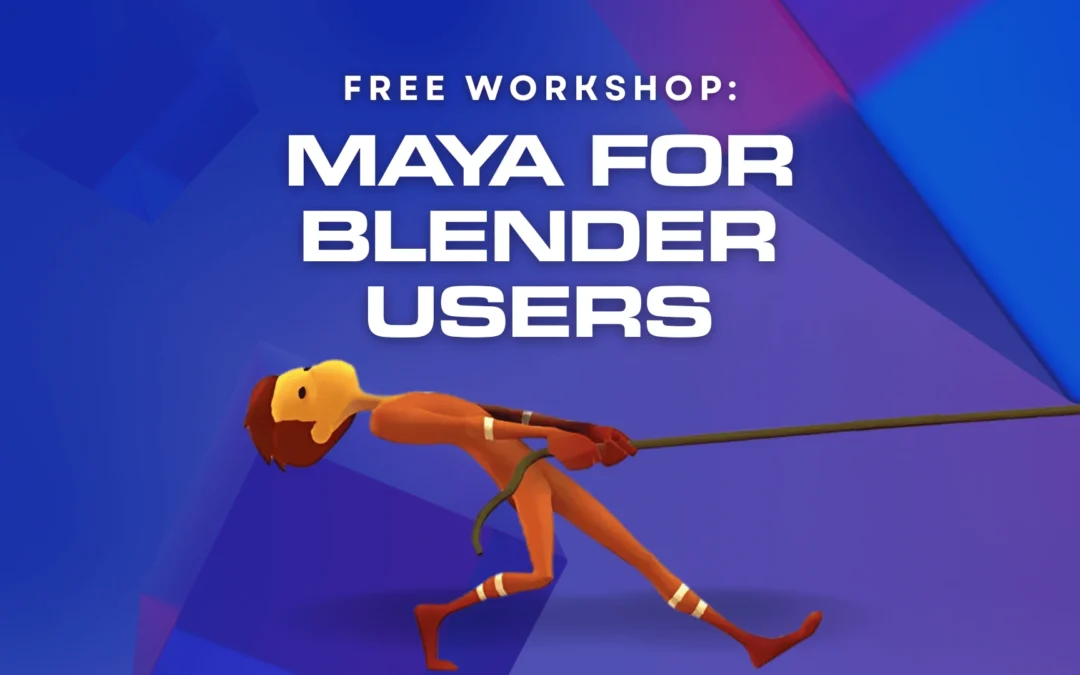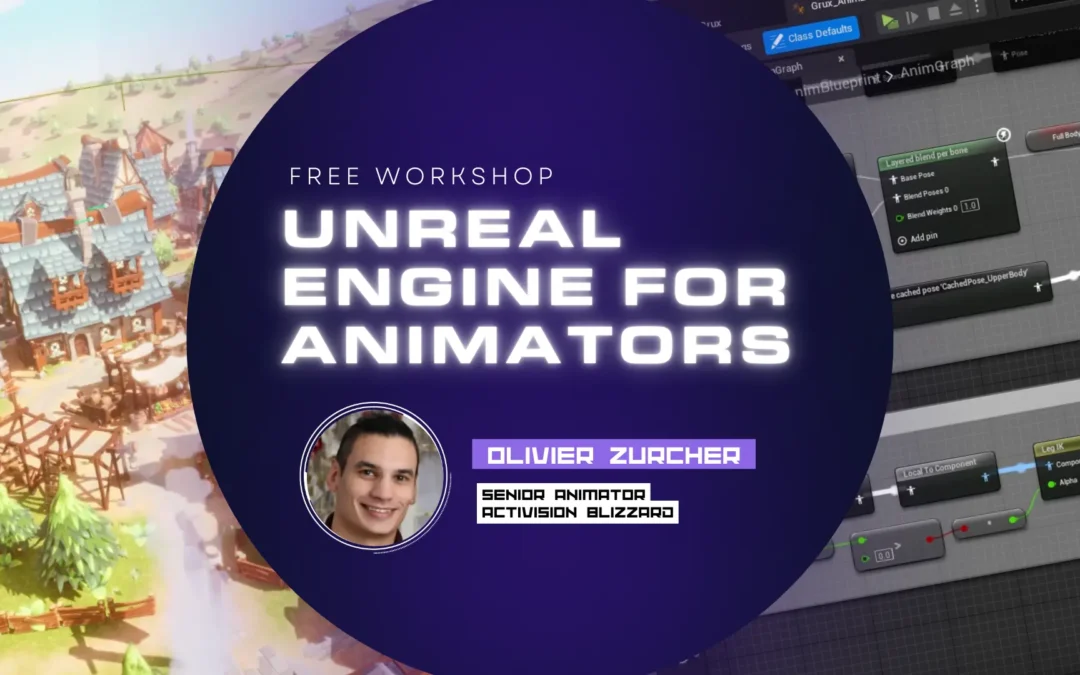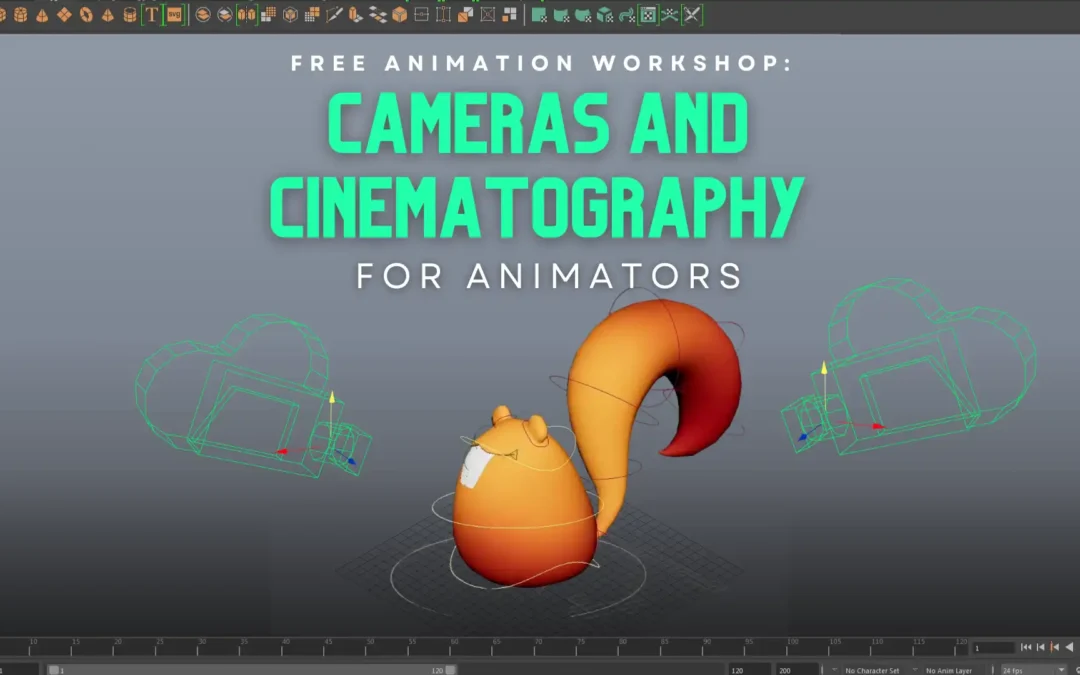
As aspiring animators, knowing the history of both 2D and computer generated animation is an important part of our educational experience. It’s rapidly changing and evolving as we speak! One of our most beloved mentors, David Tart, educates us with the evolution of animation and how we can gain respect for the key developments that have brought us to where we’re at currently. Respect, learn, and enjoy!
– The Animation Mentor Crew
Many animators have heard the terms “animation process” or “tool bag” in regards to how you take an animated shot from concept to polish. You’ve probably been advised to act out your shots, shoot video reference, create thumbnails, build solid poses for blocking, using step or copied pairs for timing, move into first pass working in a hierarchical manner, create additional breakdowns for inbetweens, track arcs of movement, and pay attention to the finer aspects of polish – as steps in this “process”.
But where do all these techniques come from?
Many animators today haven’t been required to study animation history and this can make it difficult to answer that question. That being said, knowledge is power, so let’s delve back into history a little bit so we can see where we’ve been, and where we’re going.
The quick and dirty answer to “Where did our animation technique originate?” is that they came from 2D animation, primarily the Walt Disney Studios and the venerable “9 old men”. But it’s really not that simple, because the techniques we use today are the result of a long collaboration and the melding of two different mediums: of the old AND the new.
Evolution of 2D animation
Emile Cohl is widely recognized as one of the first animators. He created straight-ahead animation using a chalkboard, exposing one frame at a time on a film camera. The results were entertaining, but usually fell into the surreal category: whacky, nonsensical, and magical. Animation stayed pretty much the same for the next 10 years, until Windsor McKay took animation to the next level. He drew characters that were more or less anatomically correct, and moved in a more realistic manner. Some regard him as the first “character animator”, but the animation industry, while innovating in terms of the equipment used to create animation, stayed pretty much the same for another 10 or 15 years. Animators and audiences as well were fascinated by the crazy morphing of characters like Felix the Cat and Koko the Clown. Anything that could be animated was: tables, chairs, candles, lamp posts – all were likely at some point in an animated short to develop the ability to move, talk, or dance. The films are entertaining, but without animation principles, it was very hard to identify with the main character – they didn’t move in realistic ways, so we couldn’t buy into their emotional states, because they weren’t “real”.

Emile Cohl, one of the first pioneering animators.
Walt Disney changed all this. In many ways he can be thought of as the Henry Ford of animation. He innovated process, equipment, and studio organization. Many of the east coast studios would simply hire a bunch of illustrators, put them in a room, give them a pack of smokes and a bottle of whiskey, put a stack of paper next to them, and tell them to animate a sequence using whatever gags they wanted. The individual animator was in charge of the entire process from story through inked animation. Disney realized that this system didn’t take advantage of the stronger talents of animators. He knew that some animators were better at creating backgrounds, some better at drawing individual poses, some better at storyboarding, some at FX animation, some creating inbetweens, or inking and painting. He organized his studio along these lines, and the results were instantly superior to the other studios of the 1930s. This success allowed him to continue to push for innovation, both artistically and technically. From the mid-1930s through the mid-1940s, many of the animation techniques and principles we use today were developed.
Disney’s Fantasia stands as a signpost in the development and evolution of 2D animation: Lush, beautiful, perfectly animated. 2D animation had reached it’s “state of the art” with this film. The technique, equipment, and 2D pipeline had been developed to the point at which “how” to make animation was no longer a question. Now animators could concentrate on “what” they could do with it – what stories to tell, what places to show, and how to draw audiences towards a deeper connection with the audience. Equipped with a stable “tool bag” and “animation process” true character animation was born!

Disney’s Fantasia pushed the technical limits of animation and created visuals that no one had seen before.
The UPA studios of the late 1940s and 1950s continued to innovate, but towards a more abstract, representational style that has less to do with character animation – so we won’t discuss that here.
Evolution of CG animation
Given that it took 2D animation about 40 years to get from the crude chalkboard drawings of Emile Cohl to the lush, vibrant animation of Disney’s Fantasia, you could say that CG animation technique and technology (close to this same 40 year mark) is nearing it’s own “state of the art”. Software and techniques continue to change, however, and when creating films there is still a question of “how” it should be done – which means we’re not quite there.
Given the nature of the technology we use, you could ask the question “Why has it taken 40 years for CG animation to develop?” The answer lies in the rift between scientists and artists. The first examples of computer animation can be seen in the early 1960s, and continued to develop throughout the 1970s and early 1980s. Computer programmers and computer graphic specialists were very busy through this period developing both the hardware and software needed to create animated movement. So why were the results of their efforts so unentertaining and why did it take so long for their animation to move from the lab to the movie screen?

Early computer monitors were calligraph and could draw only lines.
The creators of CG technology were primarily concerned with command-driven graphics and animation. They wanted animation that could simulate reality, using “real” physics data. They viewed the “cartoonists” at Disney or other studios as funny, playful, and insignificant. There wasn’t anything they could learn from 2D animators, and 2D animators, looking at the boring computer-generated patterns and smashing teapots weren’t all too excited to join forces with the computer graphics community.
This rift was first breached when a guy named John Lasseter saw Tron. Even if you don’t know much about animation history, you probably know that John was an eager, Cal-Arts trained animator. After seeing Tron he became obsessed with the possibility of using computer graphics to create entertaining animation. After a stint with Disney, he took a job with Lucas Films computer graphics division. This is where 2D animation technique and CG animation first collided. John’s early short films at Pixar wowed the computer graphics community at it’s annual SIGGRAPH gatherings. Scores of pocket-protector wearing PhDs wanted to know what type of algorithm Pixar was using to get such “life-like” movement from their characters. We know now that John was using 2D animation principles to push his characters, frame by frame, into the poses and transitions that he knew from his 2D experiences would be visually entertaining.

Seeing Tron was an inspirational moment for John Lasseter.
During the making of Toy Story, the software and animation techniques we used were still very technically driven. We used “springs” and “wave functions” and a variety of other techniques very much rooted in the coding of the software we were using – created by computer programmers, not artists. Even though many of the animators working on Toy Story had come from traditional animation backgrounds, we were forced to learn how to animate with the technology. This changed over the next 10 years. In many ways, Pixar evolved in a very similar fashion as Disney. John Lasseter and Ed Catmull put people into positions that took advantage of their strengths – coders wrote code, modelers modeled, animators animated. This allowed the “animation process” to evolve to accomodate this new medium. More and more traditional animators were hired and animators collaborated with the programmers to create software tools that were more akin to traditional animation. At the same time, these animators brought their traditional techniques for planning with them, whether from stop-motion (straight-ahead techniques with heavy planning at the front end) or 2D (thumbnailing, pose to pose). I once taught a class of newly hired animators at Pixar that consisted of 2 cel animators, 1 stop-motion animator, 2 muppeteers, and 1 sculptor. Inviting this type of talent into the animation department led to even more diverse tools and processes. New animation principles sprang out of this collaboration, like “Truth to Materials” and “Hierarchical Animation”. CG animation continued inheriting traditional animation techniques and the software continued to become more and more artist friendly. This same evolution was happening at studios like Blue Sky and Pacific Data Images.

John Lasseter realized that computers could be used to make movies with three dimensional backgrounds.
This development continues with every new release of software. Animators and CG graphics specialists work together to create artist-friendly software and tools. Animators continue to sift through the treasure trove of 2D animation techniques to adapt them for use in CG animation. Programmers continue to improve graphics, coding, and interface. CG animation continues to get better and better. This is where your “tool bag” or “animation process” originates, and why perhaps for the next several years this process may continue to change. Rigging techniques, direct manipulation interfaces, better IK techniques, should all continue to improve, and therefore affect how we, the animators, work. CG animation’s own Fantasia is just around the corner!

David Tart is a 20 year animation veteran. You can see some of this work in Toy Story, A Bug’s Life, Monster’s Inc. and Finding Nemo. He is also a veteran mentor at Animation Mentor and has worked at Pixar, Blue Sky Studios, and Disneytoon Studios to name a few. He’s taught Polishing and Portfolio, Advanced Body Mechanics and Introduction to Acting.



